NeuronUP has cognitive stimulation exercises to train the cognitive functions most frequently affected in people with Parkinson’s disease: attention, visuospatial skills, information processing speed and, especially, executive function.
Cognitive Stimulation Activities for People with Parkinson’s Disease
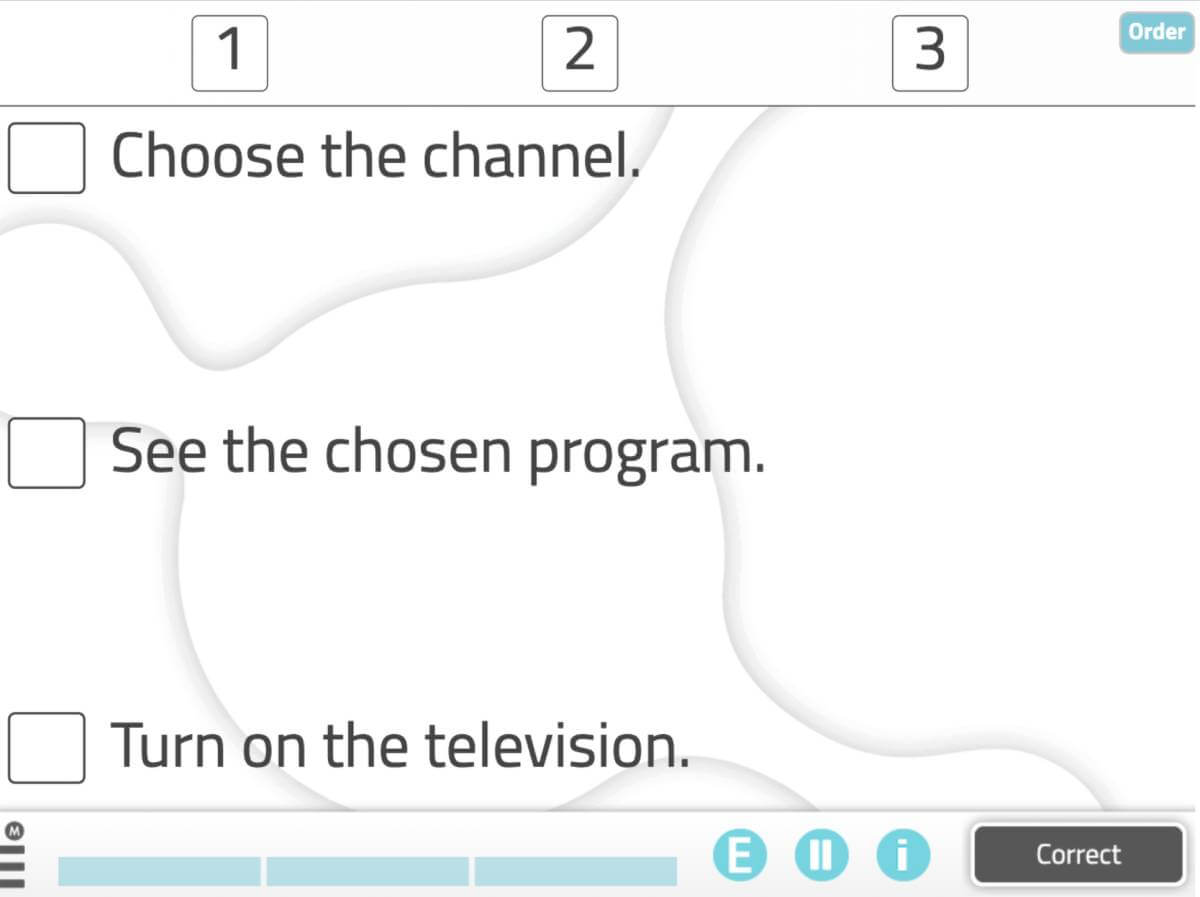
Task Sequencing (text-only)
This kind of activity is very useful for the stimulation of executive function in people with Parkinson’s disease. All daily activities can be divided into steps that the person must complete in order.
For example, in the image above, the person must number the steps necessary to make a meal in a logical order. This activity includes both picture-only and text-only versions.
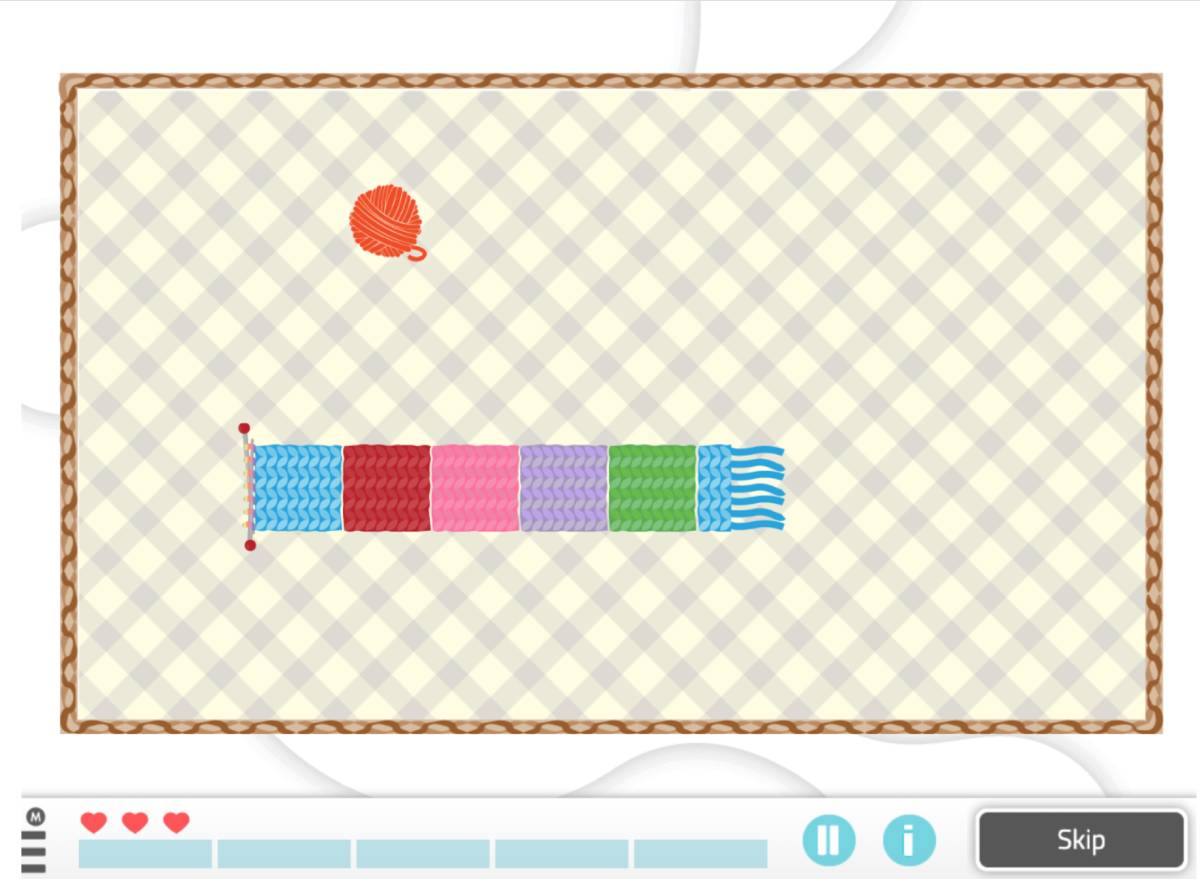
Knitting a Scarf
In this activity, clients must control a scarf which roams around picking up the balls of yarn, while trying to avoid hitting its own tail or the walls that surround the playing area. This exercise is an excellent choice for training visuospatial skills, sustained attention, and processing speed.
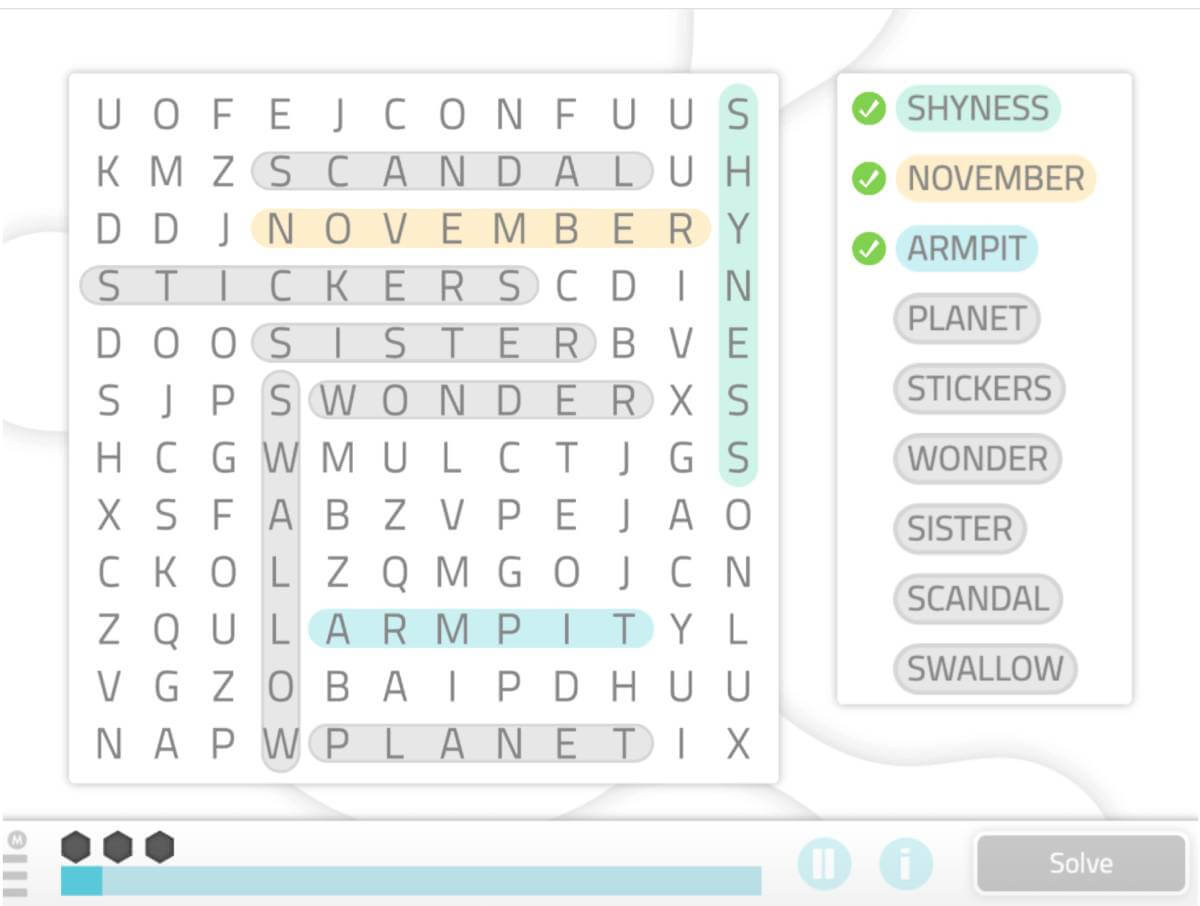
Word Association
“Word association” is another classic in cognitive stimulation, and is ideal for people with Parkinson’s disease. This exercise is oriented towards training language, reasoning, and semantic memory. In this example, clients must match words that are associated to each other. Another alternative is to match pictures.
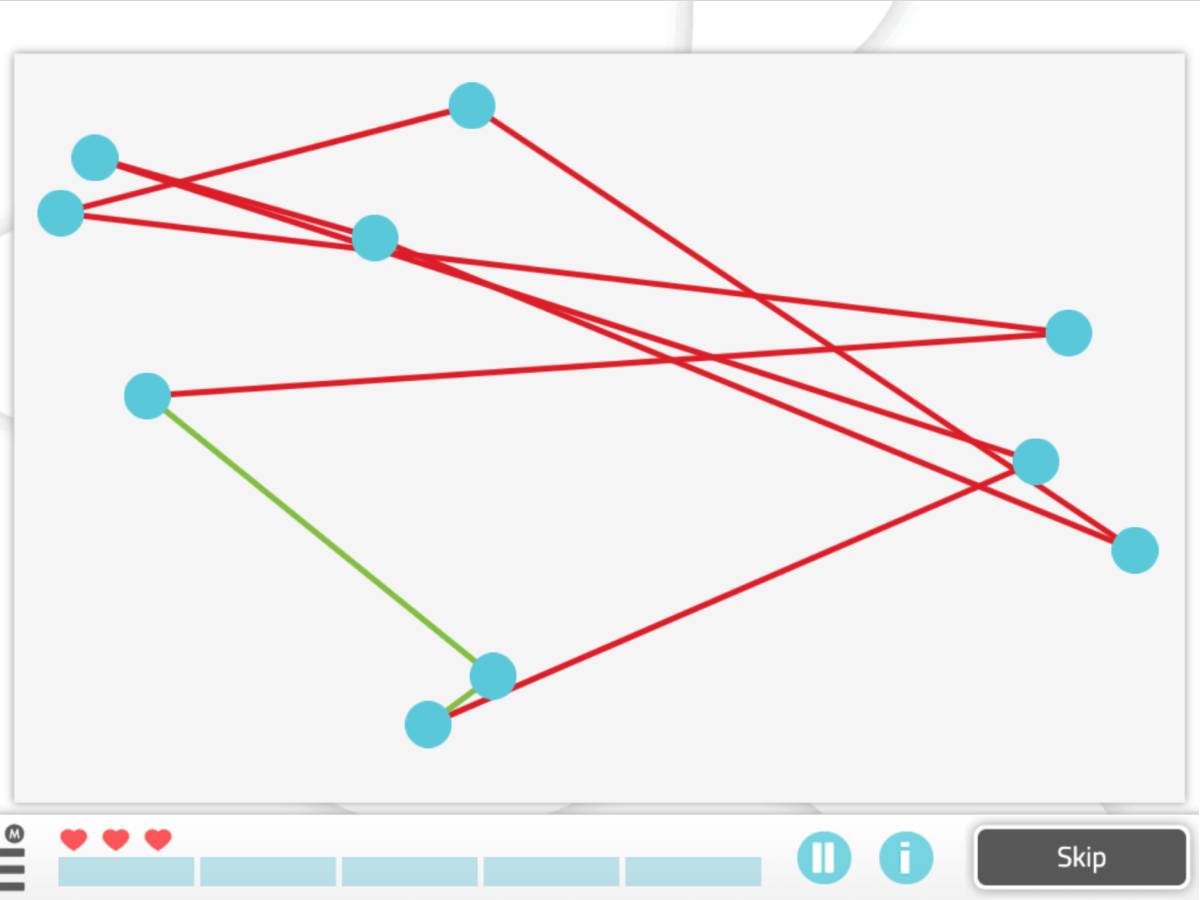
Intertwined
A more suitable activity for people with mild to moderate Parkinson’s disease, and very effective for stimulating visuospatial skills, this exercise involves forming a geometric figure by moving its vertices into shape without its sides crossing each other.
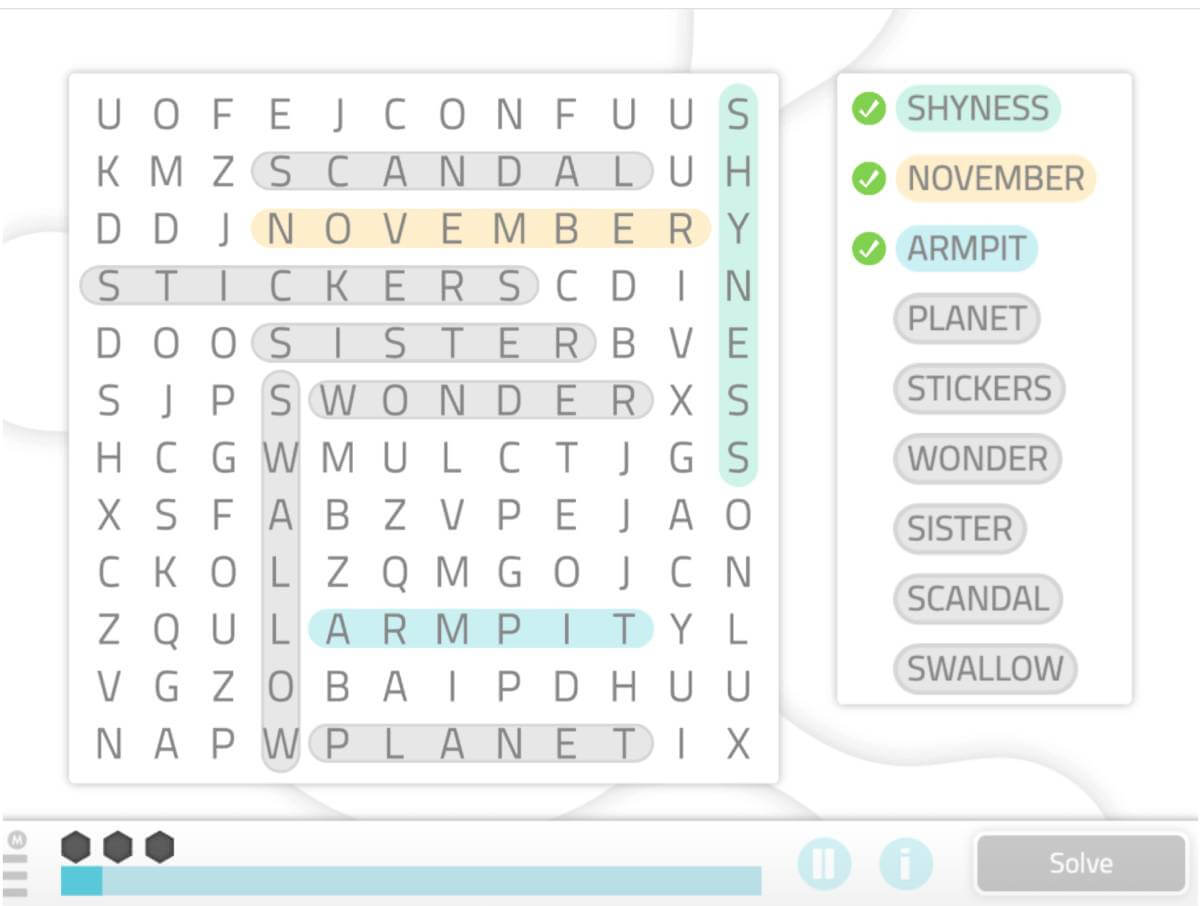
Word Search
Another mental activity that is a classic in cognitive stimulation is ‘word search’. It involves finding hidden words within a word search puzzle, and it is excellent for people with Parkinson’s disease to promote attention. This activity has many versions: finding certain fruits in the grid of letters, finding single-colored words or specific symbols, etc.
NeuronUP provides a customized word search in which the words can be adapted to the individual needs of each person. For example, the therapist can create a customized word search with the client’s favorite players or the names of their relatives, which is something ideal to improve the client’s motivation while completing the puzzle.
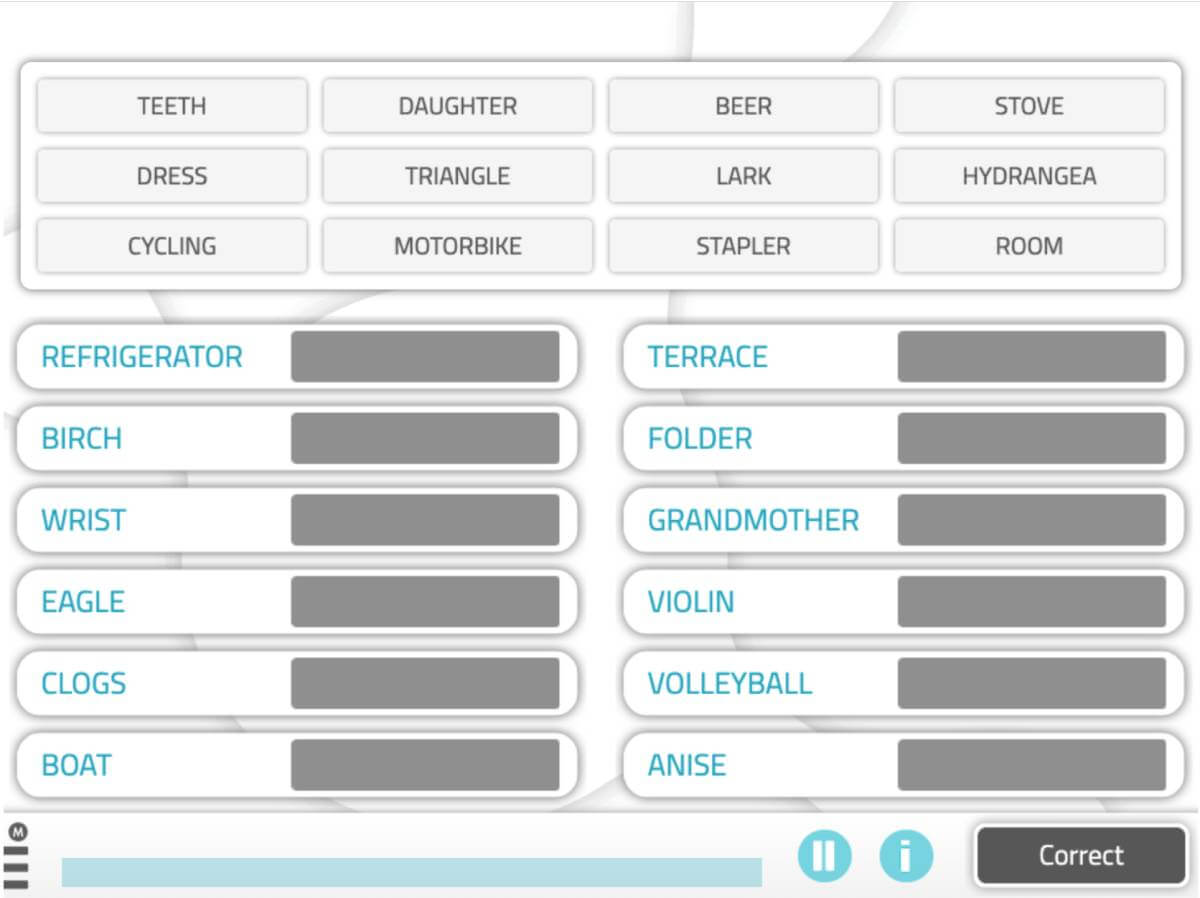
Matching Pairs by Category
The idea here is to match pairs of words by category, for example, a pair of clothing items. This activity especially targets reasoning.
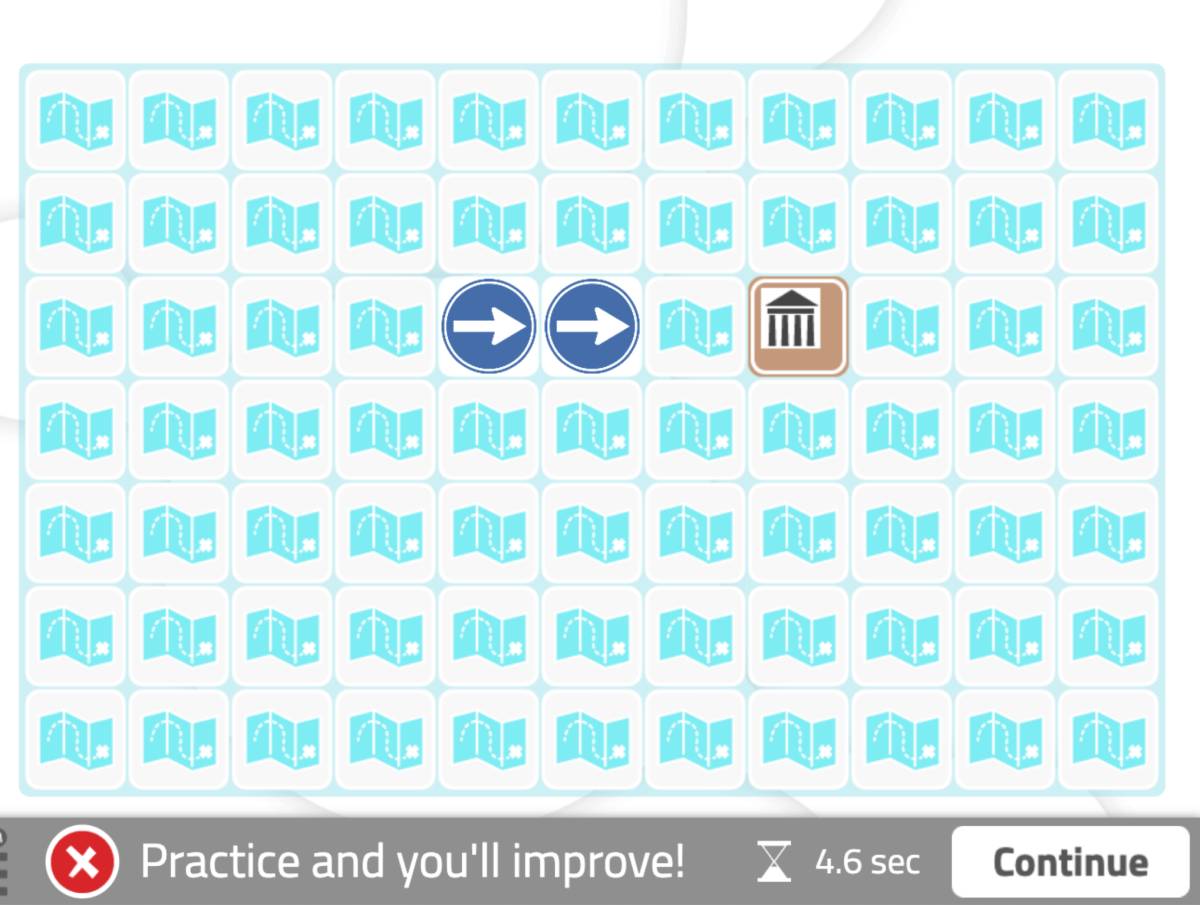
Find the Monument
An activity that we all possibly end up doing since it is so motivating, this exercise consists of following the directions as quickly as possible until finding the monument within a set time. It definitely stimulates processing speed in particular.
There are manylternatives: just by putting a time limit on an appealing activity and with a clearly quantifiable purpose, we have an exercise to stimulate cognitive processing speed.
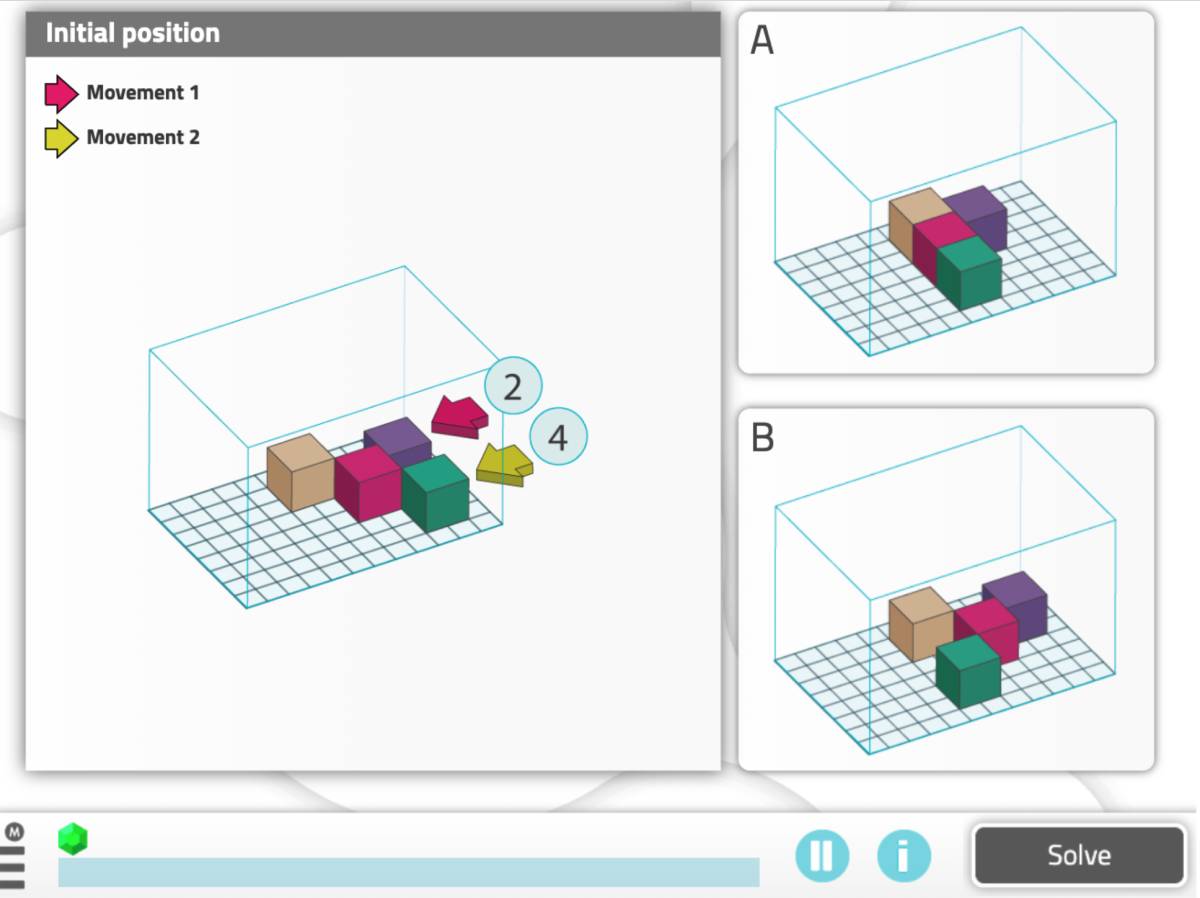
Moving Cubes
This activity consists of visualizing what a series of cubes would look like if some of them were moved. This task is designed for patients with mild to moderate Parkinson’s disease. Spatial visualization and planning are particularly trained.
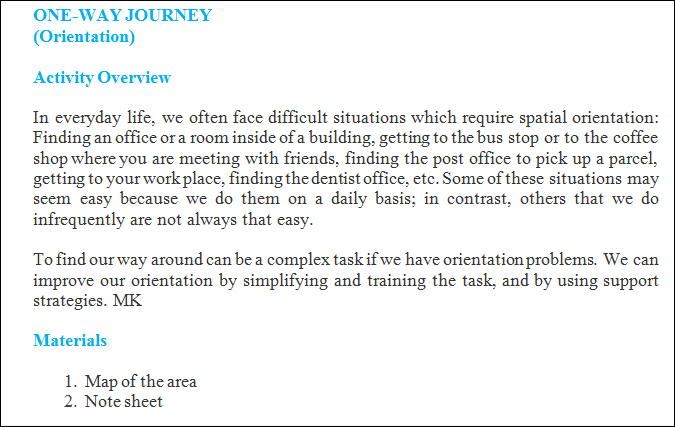
One-way Journey
With this type of exercise, we can train visuospatial skills. First, we make sure that the people in the group are familiar with the city where they live, and then, we select two well-known places that they must travel mentally as if they were walking to them.
The origin may, for example, be their home, and a movie theater could be their destination. Which streets do they have to take? Even if the level of motor impairment of the patients is not very advanced, we can ask them to draw a map.
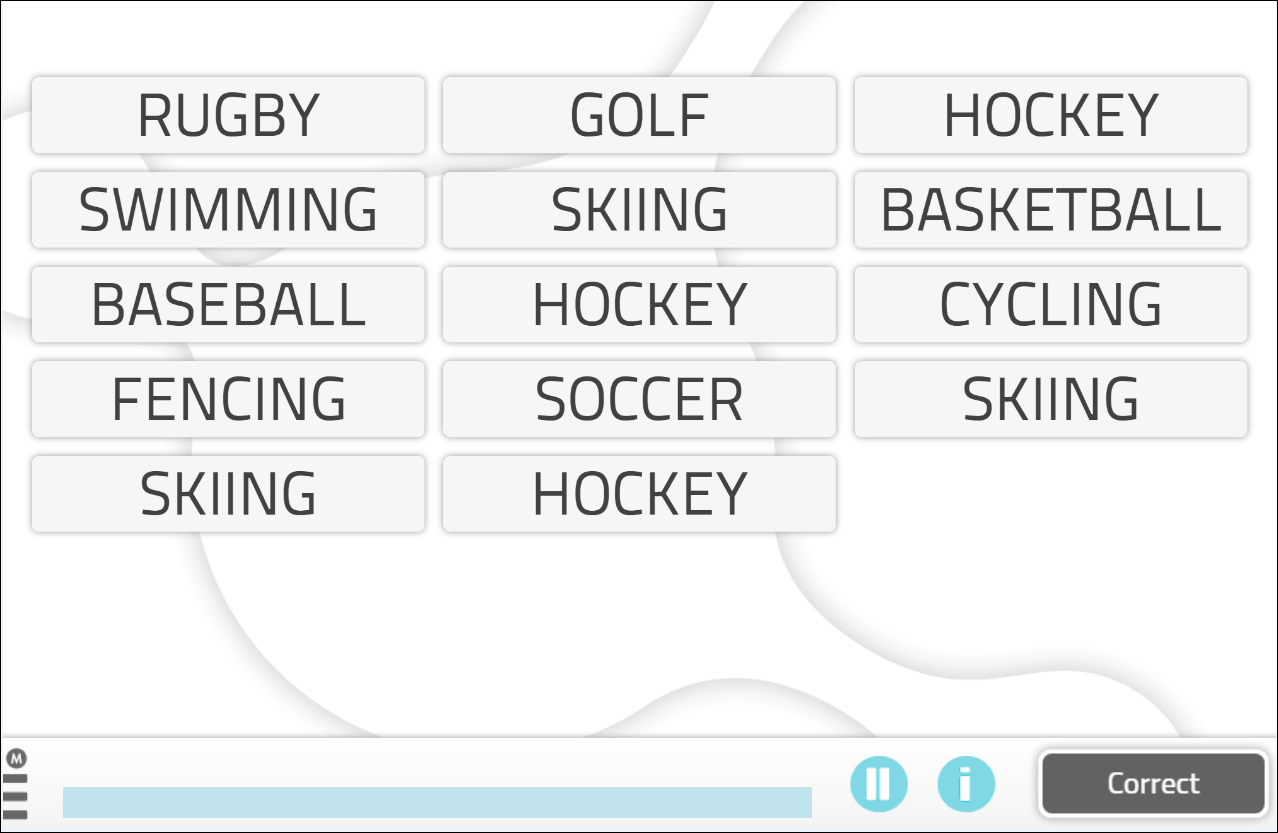
Repeated Words
This activity recommended by NeuronUP involves identifying all the words that appear more than once. For example, in this NeuronUP worksheet, we can see that the word “hockey” appears more than once; but is there any other repeated word? How many times does it appear?
References
Aarsland, D., Bronnick, K., Williams-Gray, C., Weintraub, D., Marder, K., Kulisevsky, J., … Emre, M. (2010). Mild cognitive impairment in Parkinson disease: A multicenter pooled analysis. Neurology., 75(12), 1062–9. Disponible en https://www.ncbi.nlm.nih.gov/pubmed/20855849
Reid, W., Hely, M., Morris, J., Loy, C., & Halliday, G. (2011). Dementia in Parkinson’s disease: A 20-year neuropsychological study (Sydney Multicentre study). Journal of neurology, neurosurgery, and psychiatry., 82(9), 1033–7. Disponible enhttps://www.ncbi.nlm.nih.gov/pubmed/21335570
Riedel, O., Rehberg, S. P., Heber, I., Kronenbuerger, M., Schulz, J. B., Storch, A., … Research, P. (2016). Subtypes of mild cognitive impairment in patients with Parkinson’s disease: Evidence from the LANDSCAPE study. Journal of Neurology, Neurosurgery & Psychiatry. doi:10.1136/jnnp-2016-313838

Hi I have Parkinson’s and have recently started a Parkinson’s support group for our community. I am looking for printable cognitive exercises to play at our meeting. We are a new group and have not built up our funds yet, so I’m reaching out to see if there’s a site that will allow me to print free worksheets.
Hi Ginny,
Hope everything is going well!
Thank you very much for your interest!
NeuronUP is a cognitive rehabilitation and stimulation platform for professionals. We have a worksheet plan with a single payment for life, but if you wish to work with NeuronUP, you can inform your therapist about our tool as it is for therapists only.
Best regards!